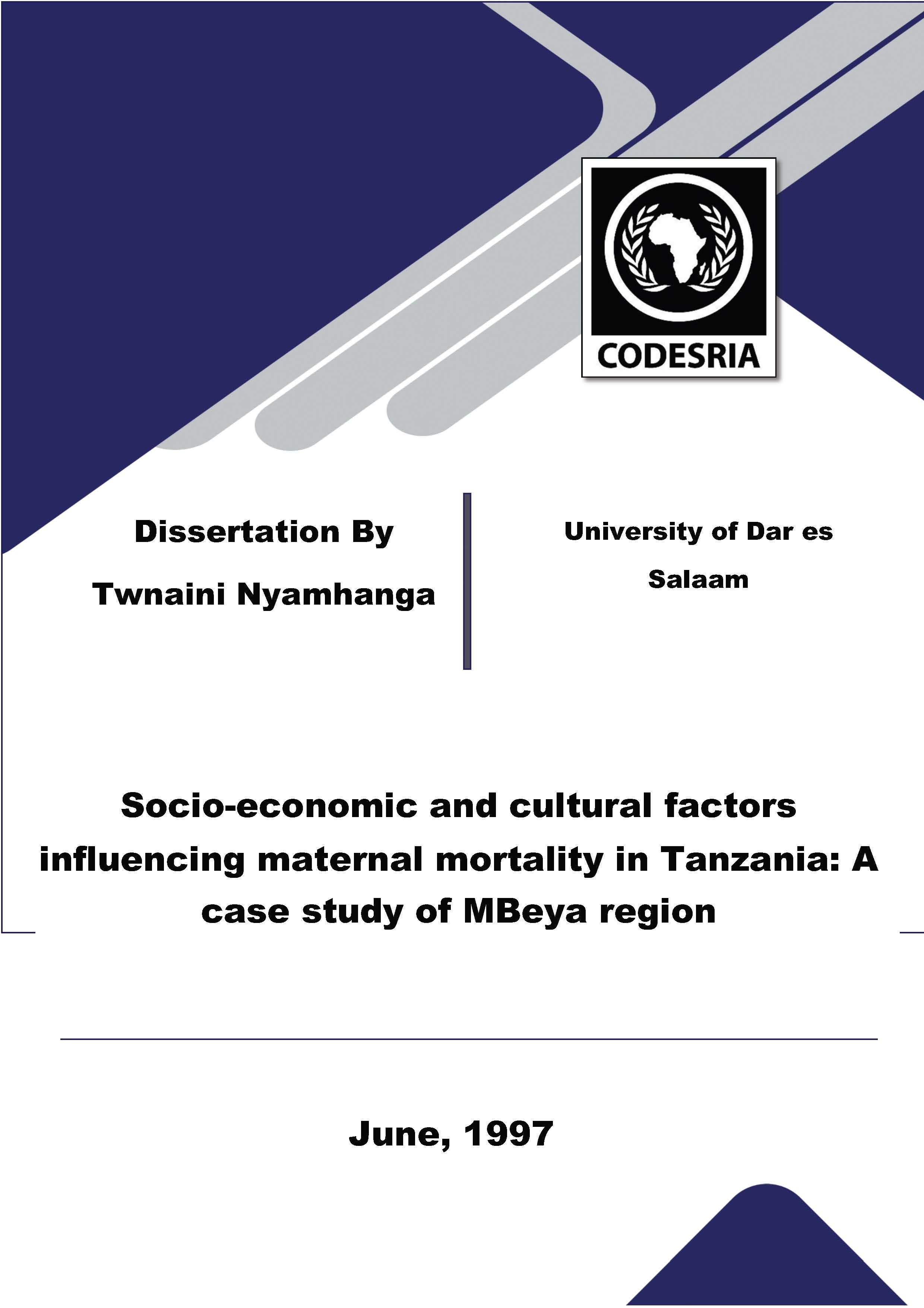Socio-economic and cultural factors influencing maternal mortality in Tanzania: A case study of MBeya region
Keywords:
Mortality, maternal mortality, cultural factors, household income, public expenditures, socio-economic factors, family planning practices, maternity services, Mbeya Region, TanzaniaSynopsis
The main concern of this study was to explore socioeconomic
and cultural factors associated with maternal
mortality in Mbeya Region. Four hypotheses guided this
study. Through them the study sought to establish
empirically the i~fluence of household income, government
expenditure, family planning practices,·and utilization of
maternity services on maternal mortality., To accomplish
this task, a descriptive and comparative (case/control)
design was employed. A sample of convenience was used.
Data was collected through interviews and focus group
discussions - involving relatives of the deceased, mothers
who delivered safely, traditional birth attendants,
religious leaders, and heads of health institutions.
The results obtained confirmed our hypotheses. That
is, it has been demonstrated that most of the deceased
belonged to the low income households as compared to women
who survived. Further that, the decrease of government
expenditure, coupled wi_th a decline in income, contributed
significantly to the increase of maternal deaths.
Moreover, the study illustrated that failure to practice
family planning and non-utilization of maternity services
predisposes women to the otherwise unnecessary deaths.
Downloads
References
Abdullah, A; J.H. Mahmood and N. Adeeb. Maternal "Mortality Rate in the Obstetric Unit of Universtiy Kebangsan Malaysia: 1981 - 1990" in Journal of Obstetrics and Gynaecology, Vol. 21 No.3 1995: pp 299 - 303.
Adetero, 0.0 "Maternal Mortality in Obstructed Labour at Ilorin, Nigeria, 11 in Journal of Obstetrics and Gynaecology of Eastern & Central Africa. Vol. 9 No. 2 1991: pp 82.
Berer, M. "A Good Time to (Re) Grass roots", in Women' s Health January - March 1996: pp 39 - 42.
Turn to the Journal 1/96.
District, Andhara Pradesh, India. Bangalore: Indian Institute of Management, 1985.
Borg, W.R. and M.D.Gall. Education Research: An Introduction. New york ,& London: Longman, 1983.
Caldwell, J.C. "Towards a Restatement of Demographic Transition", in The Persistence of High Fertility
(ed) Caldwell, J.C. Canberra: Department of Demography, The Australian National University, 1977.
Chambua, S.E., M.K. Rwebangira, R. Liyestrom and E.Y.N. Urassa. Facts Abort and Images of Teenage
Girls in Tanzania", in Chelewa Chelewa: The Dilemma of Teenage Girls (eds) Tumbo-Masabo, Z., and R. Liyestrom, Stockholm: Nordiska Afrikainstitutet, 1994.
Chinemana, F. and D. Sanders, "Health and Structural Adjustment in z·imbabwe," in Social Change and Economic Reform in Africa. (ed) Gibbon, P. Uppsala: Nordiska Afrikainstitutet, 1993.
Conable, B.B. "Safe Motherhood", in World Health Forum. Vol. 8 No. 2 1987: pp. 155 - 160
Doyal, L.and I. Pennel. The Political Economy of Health.London: Ploto Press, 1979.
Everett, V.J. Maternal Mortality in Tanzania, in Dares Salaam Medical Journal. Vol. 6 No. 1 1974: pp 7 -






